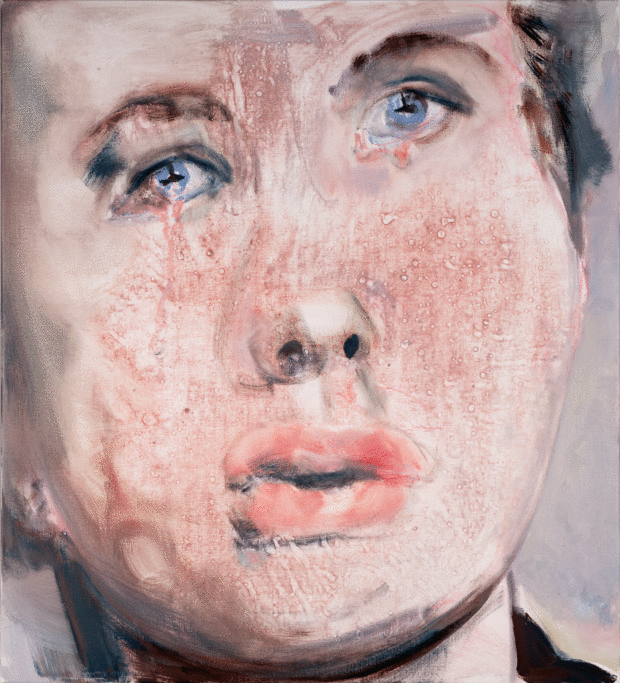Marlene Dumas, a South African painter residing in Amsterdam, is known for her provocative artistry. Her portraits, featuring celebrities, young women, and children, exude a peculiar yet captivating beauty. I trust you’ll find her works as mesmerizing as I do!

Dumas uses a technique of wet-on-wet as she combines thin layers of paint with thick ones, which creates an intimate but estranging atmosphere. Most of her paintings are taken from original photographs or magazine illustrations.

As Dumas described her works, she articulated her main intention as “revealing” rather than merely “showing”. She openly acknowledges a profound connection with her art.

Lord Alfred Douglas (1870–1945), famously known as “Bosie,” became notorious as the lover of Oscar Wilde. Their relationship led to Wilde’s imprisonment in Reading Prison from 1895 to 1897. Dumas said in Amsterdam in 2017:
I have been a fan of Oscar Wilde ever since I can remember. As a writer of great wit, his combination of intelligence and humour is unique. He was imprisoned at Reading for two years for loving the beautiful, untrustworthy “golden boy” Bosie.

Dumas plays with perspective and the proportionality of her figures to highlight what is most important to her- the emotion, expressed through the gesturality of her austere oil technique.

Dumas studied first in South Africa: “Art school in South Africa was very stimulating in a theoretical way, issues that only now are becoming important for some Europeans, like… what is political art? I learned a lot about ethics, philosophy, and theory in South Africa, while in Holland I started to look at paintings for the first time. I started to appreciate the pictorial or visual intelligence of remarkable paintings. So, that’s important to my work, as well as being white in a black country influenced my philosophy in life. I was not the victim of the bad system. I was part of the wrong system. So I don’t make work about being victimized (although apartheid as a whole was very bad for the spirit of its people). I rather find everyone capable of terrible things and I fear my own weakness and blindness first.”
